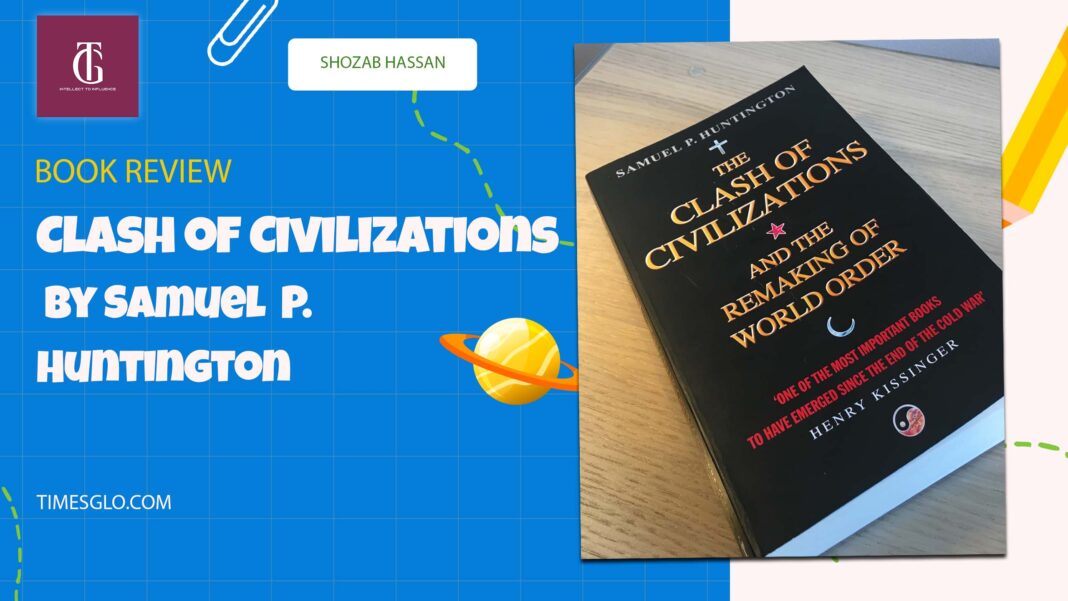Introduction
Samuel P. Huntington was an influential political scientist known for his analyses of the relationship between the military and the civil government, political development, and the clash of civilizations. His career was marked by a tendency to challenge dominant paradigms. In “Political Order in Changing Societies” (1968), he disputed the widely accepted view that political instability was a product of rapid social change and economic growth in developing countries. Instead, he argued that instability resulted from the lack of political institutions to support such change. However, he is perhaps best known for “The Clash of Civilizations and the Remaking of World Order” (1996), Huntington’s theories have been widely debated and criticized, yet they continue to shape discussions in political science, particularly in areas of international relations and comparative politics. Despite the controversy, his work is acknowledged for its impact on scholarly thought and policy-making.
“Clash of Civilizations” by is a seminal and influential work that redefines our understanding of the post-Cold War global order. Published in 1996, the book expands upon Huntington’s controversial 1993 essay in “Foreign Affairs,” where he first presented his civilizational conflict theory.
The book challenges traditional perspectives on global politics that emphasize ideological and economic factors as primary sources of conflict. Instead, Huntington proposes a new framework, arguing that cultural and civilizational identities will play the central role in post-Cold War conflicts. He envisages a multipolar world, divided not by political ideologies or economic structures, but by cultural civilizations.
In this new world order, the West’s influence is in decline, and non-Western civilizations are resurging to challenge its dominance. Huntington warns against the West’s assumption that all societies will adopt its values and institutions, instead advocating for mutual respect and coexistence among different civilizations.
This radical view has provoked considerable debate, with critics arguing that Huntington’s civilizational blocs are overly simplistic, potentially igniting the very conflicts they claim to predict. Regardless of the criticisms, “Clash of Civilizations” is an influential piece of literature that has left an indelible mark on the study of international relations, presenting a thought-provoking perspective that continues to stimulate academic and policy discussions worldwide.
Chapter 1: The New Era in World Politics
The first chapter introduces Huntington’s central thesis: that the main source of conflict in the future will be cultural and civilizational, not ideological or economic. He asserts that the post-Cold War world is multipolar and multicivilizational, and modernization doesn’t imply westernization. Huntington’s perspective is controversial but compelling, offering a paradigm shift in international relations theory.
Chapter 2: Civilizations in History and Today
Chapter two explores the concept of civilization throughout history. Huntington defines civilizations as the broadest cultural entities and provides an overview of their role in shaping history. He identifies seven or eight major civilizations, including Western, Confucian, Japanese, Islamic, Hindu, Slavic-Orthodox, Latin American, and possibly African civilization. This chapter offers a deep dive into global history, but the categorization can be seen as overly simplistic, failing to address the complexities within these civilizations.
Chapter 3: A Universal Civilization? Modernization and Westernization
In this chapter, Huntington confronts the debate about the “end of history,” arguing against the view that the entire world is moving toward a single, universal civilization dominated by the West. He challenges the assumption that economic modernization will lead to the adoption of Western values, suggesting instead that it can strengthen cultural identity. The perspective offered is insightful, but some readers might find it disregarding of the evidence of global interconnectivity and convergence of values.
Chapter 4: The Fading of the West: Power, Culture, and Indigenization
Huntington argues that the influence of the West is fading. He suggests that the rise of non-Western civilizations challenges Western dominance and values. While his arguments are backed by data, his perspective often seems one-sided, emphasizing the decline of the West while overlooking its enduring influence in many areas.
Chapter 5: Economics, Demography, and the Challenger Civilizations
In chapter five, Huntington delves into how economic and demographic trends might shape future conflicts. He highlights the resurgence of non-Western civilizations such as the Islamic and Sinic civilizations. The focus on economics and demography adds a nuanced dimension to his theory, though some might argue the predictions to be speculative.
Chapter 6: The Cultural Reconfiguration of Global Politics
Huntington discusses the changing alignment of civilizations in this chapter. He predicts that countries will band together based on shared cultural identities rather than ideological or economic similarities. While the idea is thought-provoking, it can be criticized for minimizing the importance of intra-civilizational differences.
Chapter 7: Core States, Concentric Circles, and Civilizational Order
Chapter seven expands on the idea of ‘core states,’ powerful countries serving as leaders or representatives of their civilizations. Huntington’s analysis is incisive, but the idea that nations would organize neatly around ‘core states’ is perhaps overly simplistic.
Chapter 8: The West, Civilizations, and Civilization
In the concluding chapter, Huntington discusses the West’s response to the emerging multipolar, multicivilizational world order. He cautions the West against attempting to impose its values on other civilizations, advocating instead for mutual respect and coexistence. His closing remarks are a timely reminder of the importance of understanding and respecting cultural diversity, though some may perceive it as a justification for cultural relativism.
Conclusion:
In conclusion, “Clash of Civilizations” remains a seminal and influential work that redefines our understanding of global politics in the post-Cold War era. While it is not without its flaws, the book continues to stimulate intellectual discourse and shape the way we think about the role of culture, power, and identity in international relations.
Malik Shozab
Malik Shozab Hassan is studying international relations at NUML Islamabad






